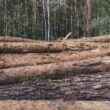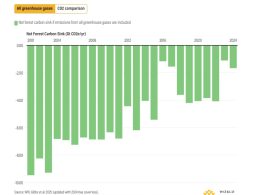A groundbreaking study has revealed that Hong Kong’s forests have the potential to store over 7 million tonnes of carbon—equivalent to around one-fifth of the city’s annual carbon emissions—offering a valuable nature-based solution in the city’s pursuit of carbon neutrality by 2050.
Unveiled by the Conservancy Association on Earth Day, the three-year research project examined more than 100 native tree species across 90 forest plots and over 20,000 individual trees. The findings represent the first comprehensive study of Hong Kong’s carbon storage capacity and were carried out in collaboration with the University of Hong Kong.
Dr Angie Ng Ying-sim, conservation manager at the Conservancy Association, emphasised that the data could inform both public and private sector initiatives, including reforestation, forest protection, and green project planning. “Hong Kong holds significant potential to become a carbon sink through targeted afforestation strategies,” she said.
The study found that fung shui forests, often home to centuries-old trees near traditional villages, could store an average of 346 tonnes of carbon per hectare. Secondary forests, which naturally regenerated post-World War II, store around 164 tonnes per hectare.
Tree species with high carbon-storing capacity included large canopy species such as autumn maple and camphor, as well as smaller but dense-wood varieties like Japanese oak and bamboo-leaf oak. These species were noted for their availability, ease of cultivation, and maintenance—key attributes for large-scale planting initiatives.
Utilising deep learning models alongside field data, the team created a carbon storage map of Hong Kong to highlight areas with the highest carbon sequestration potential. According to the Environment and Ecology Bureau, the city emitted 34.5 million tonnes of CO₂ in 2023. The map and data provide a tangible foundation for further investment in green infrastructure and forest management.
Professor Billy Hau Chi-hang of the University of Hong Kong, who partnered on the project, said the research could help developers calculate the carbon footprint of infrastructure projects and inform decisions around carbon offsetting. “This data can support organisations in evaluating carbon credit opportunities,” he explained.
Professor Hau also noted plans to create ready-to-use afforestation solutions tailored to environmental impact assessments. “We can advise developers on how long a recommended planting scheme would take to offset specific emission levels, helping them meet their sustainability targets,” he said.
The findings are expected to play a crucial role in supporting climate mitigation strategies and enhancing Hong Kong’s capacity for ecosystem-based carbon sequestration.





















